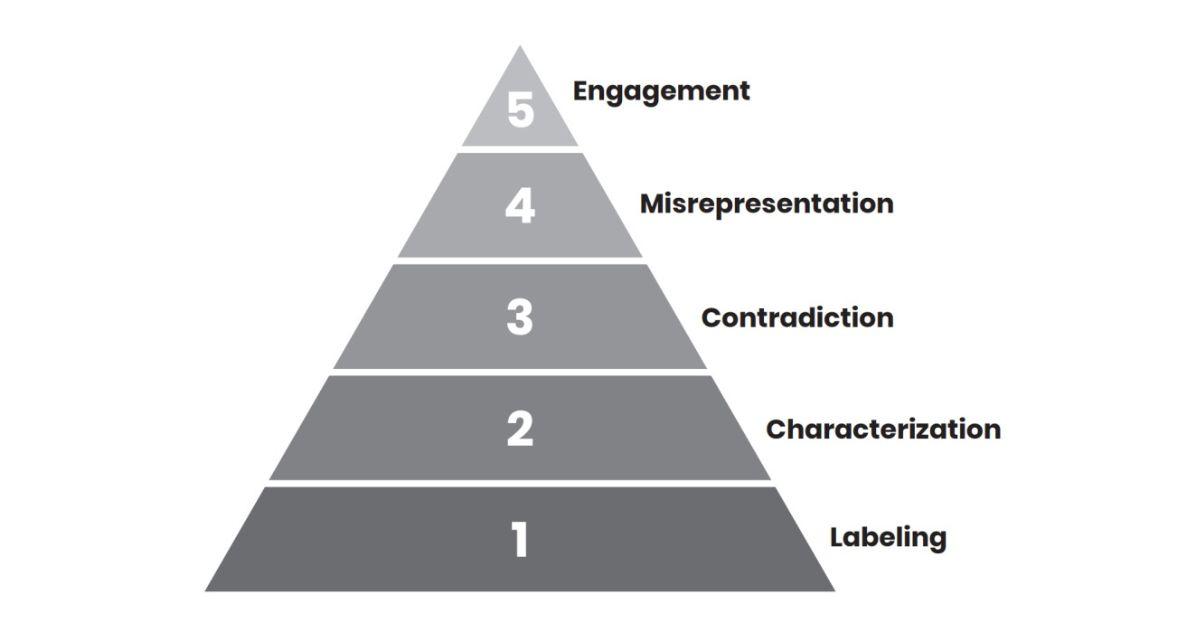By: Michael McQueen
We need to learn how to disagree. In today’s culture, we are disagreeing constantly – but we are doing a terrible job of it.
When it’s done well, disagreement is necessary in guiding us further in pursuit of truth, but on the other hand it also has potential for being highly destructive.
Edward De Bono put it best when he observed that there is a big difference between disagreeing with someone and being merely disagreeable.
While many of us assume that being persuasive is about learning to present our arguments impactfully, the way we respond to individuals and ideas we disagree with is just as important. Speaking to the theme, venture capitalist and author Paul Graham devised a spectrum for describing different forms of disagreement—from the toxic to the constructive.
Beyond safeguarding civility, Graham suggests that getting better at disagreeing well has other tangible benefits too. He suggests that while we all have a tendency to fall into intellectual dishonesty and toxicity, the biggest benefit of healthy disagreement is “not just that it will make conversations better, but that it will make the people who have them happier.”
The Disagreement Hierarchy characterizes the five common approaches to disagreement in modern discourse.

Level 1—Labelling
This lowest form of disagreement is also the most common – especially in today’s political climate. It relies on ridiculing or dismissing another individual in the most simplistic of ways: “You’re a fool, a bigot, a moron, a socialist…” and the list goes on.
When we engage in labelling, the substance of another person’s point of view or perspective is entirely ignored as we attack them as an individual. This is the realm of thrown insults, vented anger, and bitter contempt. Not only is this approach entirely unproductive when it comes to persuasion, but it is dangerously destructive to our social fabric.
In suggesting that labelling was a sign of intellectual laziness or defeat, it was Socrates who said, “When the debate is lost, slander becomes the tool of the loser.”
Level 2—Characterization
The second level of the Disagreement Hierarchy centres on attacking the characteristics, title, or authority of another individual while ignoring their point or perspective. In other words, it is about undermining who the other person is rather than what their argument or ideas may be. “You would say that…you’re a politician, a pastor, a labour unionist,” etc.
Characterization tends to rely on the dismissal of another person as wrong simply because of who they are, or because of the group they belong to. In reverse, the characterization approach may see the responder bringing up their own credibility as a way to win the argument without actually engaging in it: “As a mother of four, I can assure you that…”
While uncharitable, the characterization approach is highly effective when it comes to point scoring. This is because attacking someone else’s identity and credibility, or bolstering your own, can result in a perception that you’ve won an argument in the eyes of others watching on. If there is a sense that one person seems right or sounds right, they’ll often be assumed to be right even if there is no real reason for this conclusion and vice versa. It is a common and effective strategy to discredit another person based on their background, race, gender, or associations even if these things have nothing to do with the argument they are making.
Level 3—Contradiction
At this third level of disagreement, a response starts becoming related to the point or perspective of the other person. However, rather than engaging intelligently with the issue, the disagreeing party simply states an opposing view as if, in its own right, that was enough to nullify debate.
Sometimes contradiction goes one step further than simply stating the opposing argument and also adds cherry-picked evidence to back up that viewpoint. While these counterarguments can be a valid response in disagreement, the challenge is that they are often aimed at a tangent from the other person’s argument. This often results in two individuals who end up arguing about different things.
Level 4—Misrepresentation
At this second highest level of disagreement, the disagreeing party looks to engage with the viewpoint or argument of the other but tends to do so narrowly. The focus is often on identifying the mistakes or shortcomings of another perspective while ignoring the broader context or nuance. Quotes taken out of context can quickly and effectively misrepresent another person and their argument.
The truth is that we’re all prone to the trap of misrepresentation. This is simply because when we encounter ideas or worldviews we agree with, our Instinctive Mind is open and we scarcely evaluate what we are seeing and hearing. However, when we encounter confronting or unfamiliar ideas, we tend to be on the lookout for things to disagree with—even if substantial common ground exists.
Level 5—Engagement
The highest level of disagreement is where real thinking and intellectually honest debate takes place. This is where the guts of another person’s viewpoint or perspective are challenged fairly and rigorously. To use the sporting analogy, this is where the ball gets played rather than the man or woman.
In today’s ideological climate, versions of the lower levels of engagement flood our discussions. It is easy, and often satisfying, to remain at the level of dismissal and mockery, but if we are going to really get anywhere with our public and private conversations, moving up The Disagreement Hierarchy towards sincere engagement with each other’s perspectives will be fundamentally necessary.
Disagreement is inevitable, but whether it is ultimately destructive or productive is up to us.
Article supplied with thanks to Michael McQueen.
About the Author: Michael is a trends forecaster, business strategist and award-winning conference speaker.
Feature image: Photo by Headway, Unsplash

